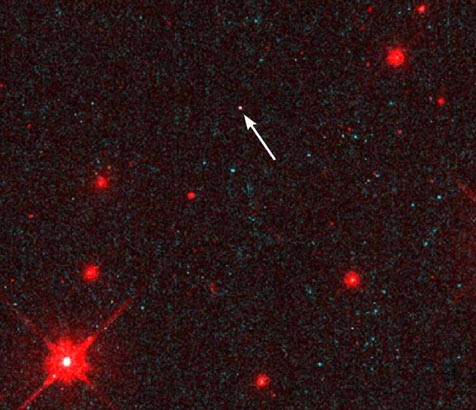Explanation: How massive can a star get without imploding into a black hole? These limits are being tested by the discovery of a lone neutron star in space. Observations by the Hubble Space Telescope released Wednesday, have been combined with previous observations by the X-ray ROSAT observatory and ultraviolet EUVE observatory for the isolated star at the location of the arrow. Astronomers are able to directly infer the star's size from measurements of its unblended brightness, temperature, and an upper limit on the distance. Assuming that the object is a neutron star of typical mass, some previous theories of neutron star structure would have predicted an implosion that would have created a black hole. That this neutron star even exists therefore allows a window to the extreme conditions that exist in the interiors of neutron stars.
1999 2000 2001 2002 2003 2004 2005 2006 2007 2008 2009 2010 2011 2012 2013 2014 2015 2016 2017 2018 2019 2020 2021 2022 2023 2024 2025 |
Январь Февраль Март Апрель Май Июнь Июль Август Сентябрь Октябрь Ноябрь Декабрь |
NASA Web Site Statements, Warnings, and Disclaimers
NASA Official: Jay Norris. Specific rights apply.
A service of: LHEA at NASA / GSFC
& Michigan Tech. U.
|
Публикации с ключевыми словами:
Эволюция звезд - нейтронные звезды - черные дыры
Публикации со словами: Эволюция звезд - нейтронные звезды - черные дыры | |
См. также:
Все публикации на ту же тему >> | |
